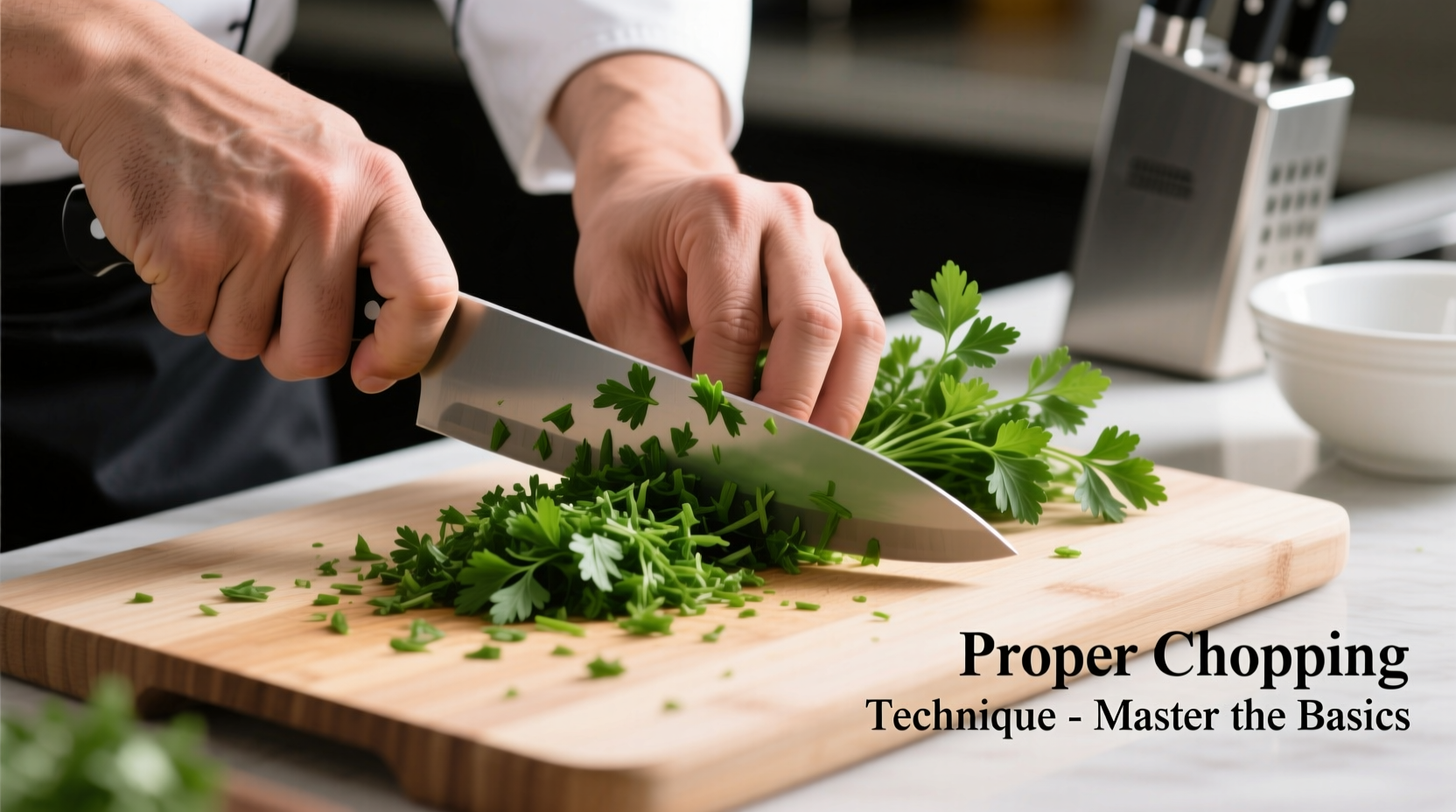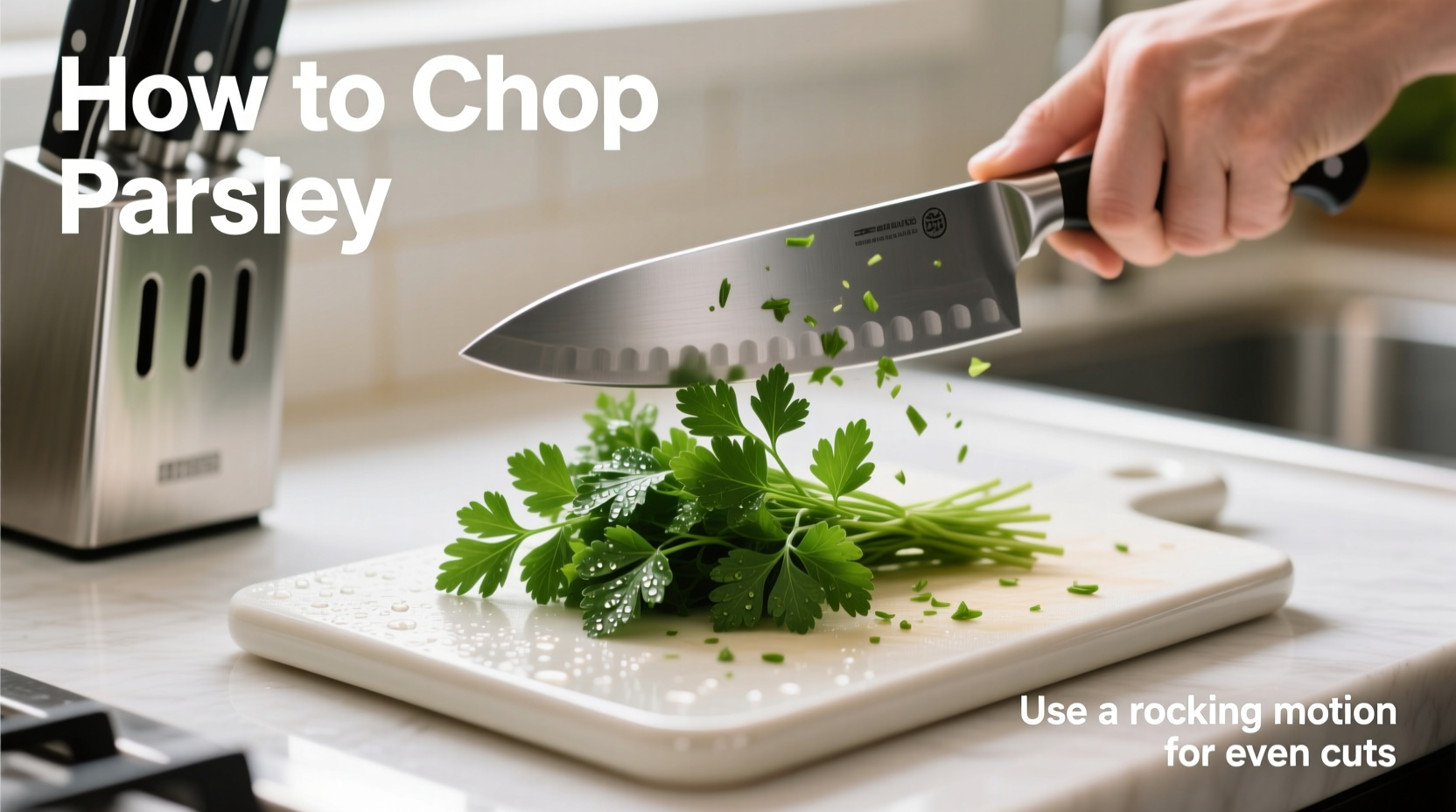Chopping parsley properly transforms this humble herb from a bland garnish into a vibrant flavor powerhouse. Whether you're finishing a stew, making gremolata, or preparing tabbouleh, the right technique ensures maximum flavor release while maintaining beautiful presentation. Let's explore the professional method that elevates your cooking from amateur to accomplished.
Why Proper Parsley Chopping Matters
Many home cooks underestimate how much technique affects parsley's flavor and appearance. When chopped correctly, parsley releases aromatic compounds that enhance dishes. When mangled or bruised, it turns bitter and loses its fresh appeal. According to The Professional Chef by the Culinary Institute of America, "Proper knife skills with delicate herbs like parsley preserve volatile oils that deliver signature flavor."
Essential Tools for Perfect Parsley
You don't need specialized equipment, but having the right basics makes all the difference:
- Sharp 8-inch chef's knife (dull blades crush rather than cut)
- Stable cutting board (wood or composite)
- Bowl for finished herbs
- Colander for washing
| Chop Size | Best For | Texture Result |
|---|---|---|
| Medium-fine | Sauces, dressings, marinades | Even distribution, no herb chunks |
| Coarse | Garnishes, hearty stews | Visible herb pieces, robust texture |
| Minced | Persillade, compound butters | Nearly paste-like, maximum flavor release |
Step-by-Step: The Professional Parsley Chopping Method
Preparation: Washing and Drying
Start with dry parsley—wet herbs slip and won't chop cleanly. Wash in cold water, then spin dry in a salad spinner. For stubborn dirt, submerge in cold water, swish gently, then spin dry. Never skip this step: residual moisture creates steam when cooking, diminishing flavor.
Stem Removal Technique
Gather small handfuls and hold vertically. With your knife, slice horizontally about 1 inch above where leaves meet stems. This removes tough lower stems while preserving tender upper stems that add flavor. As noted in Cooking Science Guy's herb preparation guide, "The upper third of parsley stems contain concentrated flavor compounds similar to the leaves." 
The Actual Chopping Process
- Gather leaves into a tight bundle on your cutting board
- Hold firmly with non-knife hand, fingertips curled under
- Start at the tip of your knife blade, using a gentle rocking motion
- Work toward the handle, maintaining consistent pressure
- Rotate bundle 90 degrees and repeat for even texture
This technique prevents bruising that releases bitter compounds. Food scientist Harold McGee explains in On Food and Cooking that "crushing herb cells through improper chopping releases enzymes that degrade flavor quality within minutes."
Alternative Chopping Methods (When Time is Short)
Mezzaluna Technique
For large quantities, a mezzaluna (half-moon knife) works efficiently. Rock the curved blade back and forth while gathering herbs toward the center. This method produces slightly less uniform results but works well for dishes where appearance matters less than flavor.
Food Processor Warning
While tempting for speed, food processors often over-process parsley into a muddy paste. If using one, pulse in 1-second bursts with 1 tablespoon of oil to prevent oxidation. As Serious Eats testing revealed, "Parsley processed beyond 3 pulses develops an unappetizing gray color within 10 minutes due to rapid oxidation."
Pro Tips for Perfect Parsley Every Time
- Chop just before use: Parsley begins losing volatile oils immediately after cutting
- Avoid metal bowls: They accelerate oxidation—use ceramic or glass instead
- Store properly: Place chopped parsley in airtight container with damp paper towel for up to 24 hours
- Season as you chop: A pinch of salt during chopping helps preserve color and flavor
When Not to Chop Parsley
Understanding context boundaries improves your cooking. For delicate dishes like consommé or refined sauces, consider using whole sprigs for infusion then removing them. As French culinary tradition teaches, sometimes the presence of herb flavor without visible pieces creates more sophisticated results. The International Culinary Center notes that "In classic French cuisine, parsley stems often infuse stocks while leaves finish dishes—understanding this distinction separates novice from skilled cooks."
Common Mistakes to Avoid
- Using a dull knife (crushes instead of cuts)
- Chopping on a wet surface (causes slipping)
- Over-handling after chopping (accelerates wilting)
- Using the entire stem (lower stems are woody and bitter)
- Chopping too far in advance (loses flavor within hours)
How Chop Size Affects Your Dishes
The size of your chop dramatically impacts both flavor release and visual presentation. For tabbouleh, a fine chop ensures parsley becomes the star rather than just a garnish. In gremolata, a medium chop allows each component to shine. When finishing a steak, coarsely chopped parsley provides textural contrast. Mastering these variations puts you in control of your dish's final character.











 浙公网安备
33010002000092号
浙公网安备
33010002000092号 浙B2-20120091-4
浙B2-20120091-4